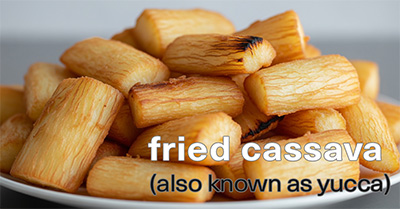You can listen to the text as you read along.
LISTEN
Portions of this voiceover are AI-generated.
Many living things such as plants and animals use toxins to defend themselves from predators
or to capture food. Although both poison and venom are dangerous, they work differently. It is important to understand the difference particularly when it comes to treating patients exposed to these substances.
Key Differences
Poison refers to a toxin that causes harm when it is absorbed by your body. This typically happens if you touch it, eat it, or breathe it in. A key characteristic of poison is that the plant or animal itself does not actively inject the toxin into you. Instead, you become poisoned through direct contact.
Some naturally occurring chemicals such as arsenic, mercury, and lead can be found in soil and water. They can cause serious illness or death if ingested in large amounts.
In contrast, venom is a toxin that an animal directly injects into another creature. This process usually occurs through a bite or a sting. For venom to cause harm, the animal must actively deliver it into your body.
Venom can affect the body in different ways. Some venoms are neurotoxins, that is, they attack the nervous system. Others are hemotoxins), which affect the blood. The specific type of venom depends on the animal.
Examples
Poisonous
- Some frogs have poison on their skin, which can affect you if touched.
- The pufferfish has tetrotoxin (a powerful neurotoxin) in certain organs such as the liver, ovaries, intestines, and skin. Unless it is prepared correctly, it can be extremely dangerous to eat its flesh (called fugu in Japan).
- While many mushrooms are edible and nutritious, some contain potent toxins that can cause mild symptoms like nausea or severe effects such as liver failure, hallucinations, and death.
- Stinging nettle (Urtica dioica) is not inherently poisonous, but it can cause a reaction due to chemicals on its surface. The plant’s tiny hairs (called trichomes) inject irritants that cause a stinging or burning sensation, redness, and itching. Once cooked, dried, or blended, the stinging hairs are neutralized, and the plant becomes safe to eat
- Cassava (Manihot esculenta) is an edible root containing natural compounds that can become toxic if not processed properly. Specifically, cassava can release cyanide unless it is prepared properly.

Venomous
- Snakes inject venom using their fangs when they bite in self-defense or when hunting prey.
- Jellyfish and some plants such as the stinging nettle also possess stingers, though they operate differently from insect stingers. They contain special cells that release venom upon contact.
- Scorpions and wasps use sharp stingers, which pierce the skin and inject venom.
- Bees leave their stingers in your body, which continue to contract and inject venom into you. Losing its stinger causes a bee to die later.
Why the Difference Matters for Patient Treatment
When people are poisoned, they have come into contact with the toxin by touching it, ingesting
it, or breathing it in. Therefore, medical treatment will focus on actions related to these routes of exposure.
If a poison has been ingested, treatment may involve administering activated charcoal to bind the toxin, performing gastric lavage (stomach pumping), or giving specific antidotes if available.
In cases of inhalation, providing fresh air or oxygen and removing the person from the source is crucial. For skin contact, decontamination through thorough washing with soap and water is a priority, sometimes followed by appropriate medication as needed.
If patients have been envenomated, treatment must address the direct entry of the toxin into the bloodstream or tissues. Medical staff assess whether the venom is primarily a neurotoxin or a hemotoxin. Treatment could involve administering a specific antivenom along with supportive care such as pain management, intravenous fluids, respiratory support, or wound care. In some cases, monitoring for allergic reactions or systemic effects is also necessary.
Up Next: Reading Comprehension
Go to the Reading Comprehension portion of the passage.
Congratulations! You’re all done reading the passage.

Thanks to our supporters!
This material has been made possible by supporters like you. Learn how you can support us.

“What should I learn next?”
Use the navigation buttons to choose another skill or another lesson in this skill.
Thank you for Supporting Snap Language
Snap Language supporters make the creation of these materials possible.
Learn how you can support our work, get perks, and help us continue creating high-quality materials.
You can support us by simply white-listing this site.